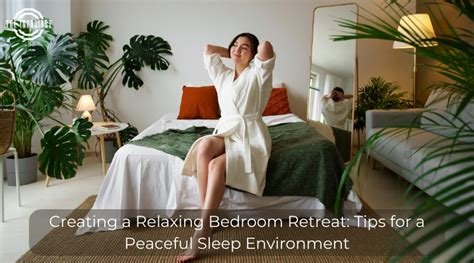In this blog post titled How to Care for Color-Treated Hair Naturally, readers are guided through essential practices for maintaining vibrant, healthy locks. The introduction explains the unique needs of color-treated hair and the benefits of using natural care products. It emphasizes the importance of selecting the right products to avoid damage and retain color. Essential routines for color-treated strands are outlined, alongside nourishing hair masks that help restore vitality. The article also addresses the impact of heat styling and highlights common mistakes to avoid that can lead to dryness and fading. Regular trims are stressed as crucial for overall hair health. Through these insights, the post concludes with key takeaways for easy hair care, ensuring that dyed hair remains beautiful and manageable. This article serves as a valuable resource for anyone seeking to learn how to care for their color-treated hair effectively.
Introduction to Caring for Color-Treated Hair
Color-treated hair requires special attention to maintain its vibrancy and health. Knowing how to care for your dyed locks is essential for preventing damage and prolonging the life of your color. Without proper care, color-treated hair can become dull, dry, and brittle, leading to more significant issues down the line.
It’s important to understand the various factors that can affect the health of your color-treated hair. From the type of dye used to environmental influences, each element plays a role in how well your hair retains its color and overall strength. Incorporating the right techniques and products into your routine will yield the best results in keeping your hair both colorful and healthy.
- Type of hair dye used
- Frequency of washing
- Water temperature during washing
- Exposure to sun and humidity
- Heat styling tools
- Conditioner and hair mask usage
- Regular salon treatments
In addition to using suitable products, adopting a well-rounded hair care routine can make all the difference. Regular deep conditioning treatments and protective styling can help mitigate damage caused by environmental factors and styling practices. By actively managing these aspects, you will not only preserve your color but also enhance the overall health of your hair.
Adopting a comprehensive hair care routine tailored for color-treated hair can help maintain color vibrancy and improve hair health.
Investing time and effort into how to care for color-treated hair can lead to stunning results. Understanding your unique hair type, while also frequently assessing the state of your dyed hair, are key components of successful hair care. Keep these ideas in mind, and enjoy your beautiful, color-treated mane while ensuring its health remains a priority.
Why Natural Care Products Matter
Utilizing natural care products is crucial when aiming to maintain and enhance the vibrancy of color-treated hair. These products are free from harmful chemicals that can strip your hair of its color and hydration. Instead of using synthetic additives, natural alternatives ensure that your hair retains its luster without compromising its health. By switching to these natural solutions, you can effectively prolong the life of your hair color and minimize damage.
Natural care products not only cater to the needs of color-treated hair but also promote overall hair health. They often contain nourishing ingredients like essential oils, plant extracts, and vitamins that work together to restore moisture and shine. The absence of harsh chemicals means your scalp can breathe, reducing irritation and promoting a healthy environment for hair growth. When considering how to care for your colored locks, using these products is essential.
- Benefits of Using Natural Products
- Gentler on Hair and Scalp
- Enhanced Moisture Retention
- Promotion of Hair Growth
- Reduced Risk of Allergic Reactions
- Environmentally Friendly
Embracing a routine that includes natural care products not only benefits your hair but is also a step toward sustainable beauty practices. When choosing products, it’s important to look for certifications or labels that indicate they are free from sulfates, parabens, and synthetic fragrances. These factors can significantly enhance your overall hair care experience and lead to healthier, happier strands.
Choosing natural care products for color-treated hair can transform your routine and allow you to enjoy vibrant locks for longer.
How to Choose the Right Products for Color-Treated Hair
Choosing the right hair care products for color-treated hair is essential to maintain its vibrancy and health. Proper selection can significantly impact how well your color holds and how nourished your strands remain. When looking for products, it is crucial to consider how to ensure they are formulated specifically for your hair type and coloring method. This not only prevents discoloration but also protects against damage and dryness.
It’s important to look for products that are free from harsh chemicals, sulfates, and parabens, which can strip color from your hair. Instead, opt for shampoos and conditioners enriched with natural ingredients that can help nourish and hydrate your locks. The right products will enhance your hair’s shine and softness while ensuring your color stays fresh for longer.
Choosing products that align with your hair’s specific needs can transform your color-treated hair care routine.
Steps to Select Hair Care Products
- Identify your hair type (oily, dry, curly, etc.).
- Look for sulfate-free shampoos that gently cleanse without fading color.
- Select conditioners that are rich in moisturizing ingredients like argan oil or shea butter.
- Consider using a color-protecting treatment or leave-in conditioner.
- Choose products with UV filters to shield your hair from sun damage.
- Read reviews and check ingredients to avoid harmful additives.
- Consult a stylist for personalized recommendations based on your hair color and condition.
By following these steps, you can effectively choose hair care products that will not only stabilize your color but also maintain your hair’s overall health. Remember, regular assessment of your hair’s needs and changing products accordingly can play a significant role in achieving the best results.
Essential Hair Care Routines for Color-Treated Strands
Maintaining vibrant and healthy color-treated hair requires a consistent routine that focuses on nourishment and protection. It’s essential to understand how to adapt your hair care regimen to meet the unique needs of colored strands. Incorporating gentle products and following specific routines will help you preserve your gorgeous hue while ensuring your hair remains strong and lustrous.
One of the foundational aspects of caring for color-treated hair is committing to a daily care routine. This will not only protect your color but also enhance the overall health of your hair. Here are the Daily Care Steps to follow:
- Use sulfate-free shampoo to prevent color fading.
- Condition regularly, opting for a color-safe conditioner that hydrates.
- Limit wash frequency to two or three times a week to retain natural oils.
- Incorporate a leave-in conditioner or serum to protect against environmental damage.
- Apply UV protection products when spending time outdoors.
- Avoid towel-drying vigorously to minimize breakage.
- Always detangle with care using a wide-tooth comb.
In addition to these daily routines, monthly treatments are vital to restore and rejuvenate color-treated locks. Natural hair masks made from ingredients like coconut oil, honey, or avocado can work wonders. Not only do they hydrate your strands, but they also help to seal in color, providing lasting vibrancy.
The right care routine can enhance the longevity of your hair color while promoting overall hair health.
Ultimately, knowing how to effectively care for your color-treated hair can make all the difference. By sticking to a structured routine and utilizing nourishing, natural products, you can enjoy beautiful, healthy hair that reflects the vibrant colors you love.
Nourishing Hair Masks and Treatments for Restoration
When it comes to understanding how to properly care for color-treated hair, nourishing hair masks and treatments can make a world of difference. These restorative remedies not only provide essential hydration but also help to repair damage caused by the coloring process. Regular use of these masks can enhance the vibrancy of your color and extend the lifespan of your hair dye, making your locks look more radiant and healthy.
Incorporating natural ingredients into your hair care routine is vital. Many commercial products contain harsh chemicals that can strip your hair of moisture and nutrients. Instead, opt for homemade hair masks crafted from nourishing ingredients that cater to your hair’s specific needs. These can be easy to prepare and often utilize items already found in your kitchen.
- Top Natural Hair Mask Recipes
- Avocado and Olive Oil Mask: Rich in fatty acids, this mask deeply moisturizes and helps repair damage.
- Coconut Milk and Honey Mask: A perfect blend for hydration, this mask also adds shine and softness to hair.
- Banana and Yogurt Mask: Packed with vitamins, this mask strengthens hair and prevents breakage.
- Aloe Vera and Castor Oil Mask: Known for its soothing properties, aloe vera promotes hair growth while castor oil deeply conditions.
- Egg and Coconut Oil Mask: This protein-rich mask strengthens hair and adds a natural shine.
- Oatmeal and Honey Treatment: Oatmeal soothes the scalp while honey moisturizes and provides shine.
- Green Tea and Lemon Rinse: A refreshing treatment that not only nourishes but also combats dandruff.
These natural hair mask recipes can be easily integrated into your weekly hair care regimen. The key is consistency; applying these masks regularly will yield the best results. Remember to follow up with a good conditioner to lock in moisture after each treatment.
Utilizing nourishing masks not only impacts the external appearance of your hair but also serves to enhance the overall health of your strands. By prioritizing these natural methods in your hair care routine, you’ll learn exactly how to maintain your color-treated hair’s vitality while minimizing damage.
Understanding the Effects of Heat Styling
Heat styling tools, while popular for achieving various hairstyles, can significantly damage color-treated hair. The intense heat from blow dryers, flat irons, and curling wands can strip moisture from your hair, leading to dryness and brittleness. Furthermore, using heat for styling can fade color rapidly, causing uneven tones and lackluster shine. To maintain your hair’s vibrancy and health, it’s essential to understand these effects and implement effective strategies to minimize damage.
To protect your color-treated hair from the adverse effects of heat styling, consider adopting specific practices that help safeguard its integrity. Incorporate heat protection sprays that are designed to shield your hair from high temperatures. Additionally, reducing the frequency of heat styling sessions can significantly lower the risk of damage. Always opt for the lowest effective temperature on your styling tools, as this can help maintain moisture levels in the hair cuticle.
- Use a heat protectant spray before styling.
- Limit heat styling to once a week.
- Opt for lower temperature settings on tools.
- Choose tools with ceramic plates for even heat distribution.
- Keep hair clean and dry before applying heat.
- Invest in high-quality styling tools.
- Regularly trim your ends to minimize split ends.
Incorporating these practices not only preserves your color but also enhances the overall health of your hair. If you can avoid heat styling altogether, your hair will thank you in the long run. Now, let’s explore some natural alternatives to heat styling that can keep your hair looking fabulous without the associated risks.
Natural Alternatives to Heat Styling
Exploring natural alternatives to heat styling is a fantastic way to maintain your color-treated hair’s integrity. Techniques such as braiding damp hair to create waves or using rollers can help you achieve beautiful styles without the damaging effects of heat. Even simple options like air drying and using natural oils can enhance your hair’s texture and shine. By embracing these methods, you’ll not only preserve your color but also promote healthier hair overall.
Common Mistakes to Avoid with Color-Treated Hair
When searching for tips on how to maintain your vibrant, color-treated hair, it’s equally important to recognize common errors that can diminish its shine and health. Even though you might be sticking to a regular routine, seemingly minor mistakes can lead to significant consequences over time. Understanding these pitfalls can help you preserve your hair color while keeping your locks healthy.
Typical Pitfalls to Watch Out For:
- Washing hair too frequently, which strips natural oils
- Using hot water instead of cold or lukewarm water during washes
- Neglecting to use UV protection products for outdoor exposure
- Opting for the wrong hair care products that are not sulfate-free
- Avoiding deep conditioning treatments or hair masks
- Forgetting to read the ingredient labels on styling products
- Overusing heat styling tools without protective sprays
Each of these mistakes can lead to fading, dryness, and damage, thus affecting the longevity of your color. It’s essential to adapt your hair care routine to suit the unique needs of color-treated strands. For instance, selecting a sulfate-free shampoo can significantly contribute to color retention, while avoiding frequent washes helps maintain essential moisture.
The environmental factors also play a crucial role in the maintenance of color-treated hair. Sun exposure, humidity, and even chlorinated water can impact the vibrancy of your hue. Consequently, making a conscious effort to shield your hair from these elements is vital. Adopting simple practices, such as wearing a hat outside and rinsing hair post-swim, can extend the life of your color and enhance your hair’s health.
The Importance of Regular Trims for Healthy Hair
When caring for color-treated hair, one crucial yet often overlooked aspect is the significance of regular trims. Regular trims ensure that your hair remains healthy, vibrant, and easier to style. They help to eliminate split ends and minimize damage, which is especially important for color-treated strands that are already prone to dryness and breakage. Maintaining the health of your hair should be a priority, and incorporating trims into your hair care routine is one of the most effective strategies.
Many people may wonder how to integrate trimming into a hair care routine effectively. It is recommended to schedule a trim every 6 to 8 weeks, depending on how fast your hair grows and the condition it is in. A professional stylist can assess your hair texture and condition to provide personalized guidance. Regular trims not only promote healthier hair but also enhance the overall look, making color-treated hair appear more vibrant and polished.
Regular trims help maintain healthy hair by preventing split ends and promoting even growth.
Steps to Schedule Your Cuts:
- Assess your hair’s condition and growth rate.
- Define how often you typically experience split ends.
- Consult with a hairstylist for professional advice.
- Plan your trims every 6-8 weeks as a rule of thumb.
- Keep track of your appointment schedule using a calendar or app.
- Communicate your hair goals with your stylist during each visit.
- Reassess if any adjustments need to be made based on the hair’s health.
Incorporating these steps into your routine will make it easier to monitor the health of your color-treated hair. Moreover, regular trims give you the chance to discuss any concerns with your stylist, ensuring that you maintain hair color integrity while promoting optimal health. Remember, healthy hair is not just about the products you use; it’s also about the care you extend to it through timely trims.
Conclusion and Key Takeaways for Easy Hair Care
In conclusion, learning how to care for color-treated hair naturally can transform your hair care routine and promote healthier, more vibrant hair. By understanding the challenges and special needs of color-treated strands, you can make informed choices that support your hair’s health. This journey involves selecting the right products, incorporating nourishing treatments, and avoiding common pitfalls that can detract from your hair’s quality.
Implementing a consistent hair care regimen will help maintain the integrity and color of your locks. It’s not just about using the right shampoo or conditioner; it also encompasses how you handle your hair daily. Regular trims, combined with proper hydration and protection, will keep your color from fading and your hair looking lively and beautiful.
Actionable Steps for Your Routine:
- Opt for sulfate-free shampoos to minimize color stripping.
- Use conditioner specifically designed for color-treated hair to maintain moisture.
- Incorporate nourishing hair masks weekly to restore vitality.
- Avoid excessive heat styling and always use a heat protectant when necessary.
- Schedule regular trims every 6-8 weeks to remove split ends.
- Limit sun exposure by wearing hats or using UV protectant hair products.
- Be gentle when brushing to prevent breakage and minimize damage.
Ultimately, the key to successful hair care lies in embracing natural methods that enhance your hair’s condition and color longevity. As you discover the right balance of products and techniques, remember that patience and consistency are essential. Your color-treated hair deserves special attention and affection, and with these tips in mind, you’ll be equipped to nurture it effectively.









